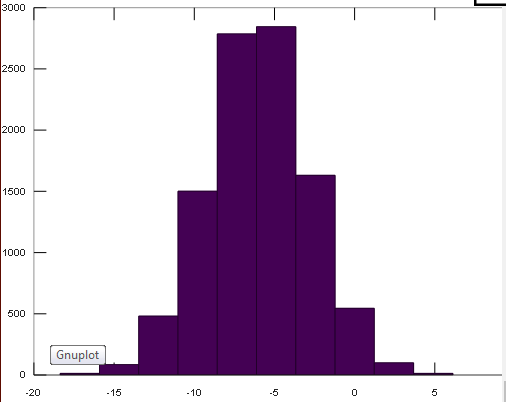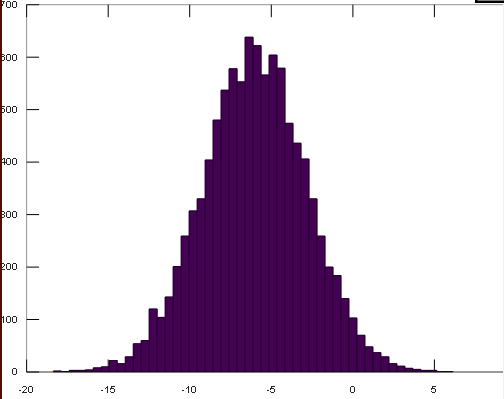Setting Up Your Programming Assignment Environment
Introductory Video
The Machine Learning course includes several programming assignments which you’ll need to finish to complete the course. The assignments require the Octave scientific computing language.
Octave is a free, open-source application available for many platforms. It has a text interface and an experimental graphical one. Octave is distributed under the GNU Public License, which means that it is always free to download and distribute.
Use Download to install Octave for windows. "Warning: Do not install Octave 4.0.0";
Installing Octave on GNU/Linux : On Ubuntu, you can use: sudo apt-get update && sudo apt-get install octave. On Fedora, you can use: sudo yum install octave-forge
Octave Tutorial : Basic Operations
Below commands can be copied and executed in the octave prompt one by one:
Alternatively: Download octave script and run it in octave using command source("1.m"). Note : You may have to set octave to current working directory first.
Comments are indicated in octave by putting % before the line
%% elementary operations 5+6 % ans = 11 3-2 % ans = 1 5*8 % ans = 40 1/2 % ans = 0.50000 2^6 % ans = 64 1 == 2 % false - ans = 0 1 ~= 2 % true. note, not "!=" ans = 1 1 && 0 % ans = 0 1 || 0 % ans = 1 xor(1,0) % ans = 1 %% variable assignment a = 3; % semicolon suppresses output b = 'hi'; c = 3>=1; % Displaying them: a = pi disp(a) disp(sprintf('2 decimals: %0.2f', a)) % 2 decimals: 3.14 disp(sprintf('6 decimals: %0.6f', a)) % 6 decimals: 3.141593 format long a % a = 3.14159265358979 format short a % a = 3.1416 %% vectors and matrices A = [1 2; 3 4; 5 6] #{ A = 1 2 3 4 5 6 #} v = [1 2 3] #{ v = 1 2 3 #} v = [1; 2; 3] #{ v = 1 2 3 #} v = 1:0.1:2 % from 1 to 2, with stepsize of 0.1. Useful for plot axes #{ v = Columns 1 through 8: 1.0000 1.1000 1.2000 1.3000 1.4000 1.5000 1.6000 1.7000 Columns 9 through 11: 1.8000 1.9000 2.0000 #} v = 1:6 % from 1 to 6, assumes stepsize of 1 (row vector) #{ v = 1 2 3 4 5 6 #} C = 2*ones(2,3) % same as C = [2 2 2; 2 2 2] #{ C = 2 2 2 2 2 2 #} w = ones(1,3) % 1x3 vector of ones #{ w = 1 1 1 #} w = zeros(1,3) #{ w = 0 0 0 #} w = rand(1,3) % drawn from a uniform distribution #{ w = 0.21612 0.37176 0.98264 #} w = randn(1,3)% drawn from a normal distribution (mean=0, var=1) #{ w = 0.038128 -0.426170 0.114072 #} w = -6 + sqrt(10)*(randn(1,10000)); % (mean = ‐6, var = 10) ‐ note: add the semicolon hist(w) % plot histogram using 10 bins (default) hist(w,50) % plot histogram using 50 bins
hist(w,50) % plot histogram using 50 bins
 % note: if hist() crashes, try "graphics_toolkit('gnu_plot')"
I = eye(4) % 4x4 identity matrix
#{
I =
Diagonal Matrix
1 0 0 0
0 1 0 0
0 0 1 0
0 0 0 1
#}
% help function
help eye
help rand
help help
% note: if hist() crashes, try "graphics_toolkit('gnu_plot')"
I = eye(4) % 4x4 identity matrix
#{
I =
Diagonal Matrix
1 0 0 0
0 1 0 0
0 0 1 0
0 0 0 1
#}
% help function
help eye
help rand
help help
Octave Tutorial : Moving Data Around
Below commands can be copied and executed in the octave prompt one by one:
Comments are indicated in octave by putting % before the line
%% dimensions sz = size(A) % 1x2 matrix: [(number of rows) (number of columns)] size(A,1) % number of rows size(A,2) % number of cols length(v) % size of longest dimension A(3,2) % indexing is (row,col) A(2,:) % get the 2nd row. % ":" means every element along that dimension A(:,2) % get the 2nd col A([1 3],:) % print all the elements of rows 1 and 3 A(:,2) = [10; 11; 12] % change second column A = [A, [100; 101; 102]]; % append column vec A(:) % Select all elements as a column vector. % Putting data together A = [1 2; 3 4; 5 6] B = [11 12; 13 14; 15 16] % same dims as A C = [A B] % concatenating A and B matrices side by side C = [A, B] % concatenating A and B matrices side by side C = [A; B] % Concatenating A and B top and bottom
Octave Tutorial : Computing on Data
Below commands can be copied and executed in the octave prompt one by one:
Comments are indicated in octave by putting % before the line
%% initialize variables A = [1 2;3 4;5 6] B = [11 12;13 14;15 16] C = [1 1;2 2] v = [1;2;3] %% matrix operations A * C % matrix multiplication A .* B % element‐wise multiplication % A .* C or A * B gives error ‐ wrong dimensions A .^ 2 % element‐wise square of each element in A 1./v % element‐wise reciprocal log(v) % functions like this operate element‐wise on vecs or matrices exp(v) abs(v) -v % -1*v v + ones(length(v), 1) % v + 1 % same A' % matrix transpose %% misc useful functions % max (or min) a = [1 15 2 0.5] val = max(a) [val,ind] = max(a) % val ‐ maximum element of the vector a and index ‐ index value where maximum occur val = max(A) % if A is matrix, returns max from each column % compare values in a matrix & find a < 3 % checks which values in a are less than 3 find(a < 3) % gives location of elements less than 3 A = magic(3) % generates a magic matrix ‐ not much used in ML algorithms [r,c] = find(A>=7) % row, column indices for values matching comparison % sum, prod sum(a) prod(a) floor(a) % or ceil(a) max(rand(3),rand(3)) max(A,[],1) %‐ maximum along columns(defaults to columns ‐ max(A,[])) max(A,[],2) %‐ maximum along rows A = magic(9) sum(A,1) sum(A,2) sum(sum( A .* eye(9) )) sum(sum( A .* flipud(eye(9)) )) % Matrix inverse (pseudo‐inverse) pinv(A) % inv(A'*A)*A'
Octave Tutorial : Plotting Data
Below commands can be copied and executed in the octave prompt one by one:
Comments are indicated in octave by putting % before the line
%% plotting t = [0:0.01:0.98]; y1 = sin(2*pi*4*t); plot(t,y1); y2 = cos(2*pi*4*t); hold on; % "hold off" to turn off plot(t,y2,'r'); xlabel('time'); ylabel('value'); legend('sin','cos'); title('my plot'); print ‐dpng 'myPlot.png' close; % or, "close all" to close all figs figure(1); plot(t, y1); figure(2); plot(t, y2); figure(2), clf; % can specify the figure number subplot(1,2,1); % Divide plot into 1x2 grid, access 1st element plot(t,y1); subplot(1,2,2); % Divide plot into 1x2 grid, access 2nd element plot(t,y2); axis([0.5 1 ‐1 1]); % change axis scale %% display a matrix (or image) figure; imagesc(magic(15)), colorbar, colormap gray; % comma‐chaining function calls. a=1,b=2,c=3 a=1;b=2;c=3;
Octave Tutorial : Control statements: for, while, if statements
Below commands can be copied and executed in the octave prompt one by one:
Comments are indicated in octave by putting % before the line
v = zeros(10,1); for i=1:10, v(i) = 2^i; end; % Can also use "break" and "continue" inside for and while loops to control execution. i = 1; while i <= 5, v(i) = 100; i = i+1; end i = 1; while true, v(i) = 999; i = i+1; if i == 6, break; end; end if v(1)==1, disp('The value is one!'); elseif v(1)==2, disp('The value is two!'); else disp('The value is not one or two!'); end
Octave Tutorial : Functions
Below commands can be copied and executed in the octave prompt one by one:
Comments are indicated in octave by putting % before the line
To create a function, type the function code in a text editor (e.g. gedit or notepad), and save the file as "functionName.m" so for below example file should be saved as "squareThisNumber.m" Example function:
function y = squareThisNumber(x) y = x^2;
To call the function in Octave, do either: 1) Navigate to the directory of the functionName.m (squareThisNumber.m) file and call the function
% Navigate to directory: cd /path/to/function % Call the function: functionName(args)
2) Add the directory of the function to the load path and save it:You should not use addpath/savepath for any of the assignments in this course. Instead use 'cd' to change the current working directory.
% To add the path for the current session of Octave: addpath('/path/to/function/') % To remember the path for future sessions of Octave, after executing addpath above, also do: savepath Octave's functions can return more than one value:function [y1, y2] = squareandCubeThisNo(x) y1 = x^2 y2 = x^3
[a,b] = squareandCubeThisNo(x)